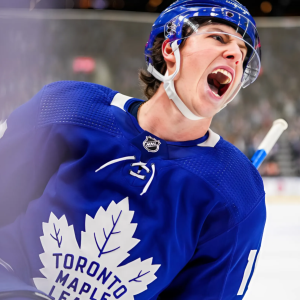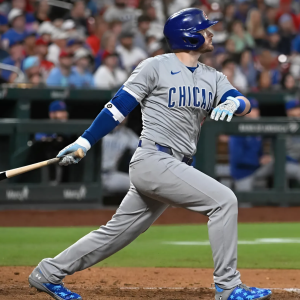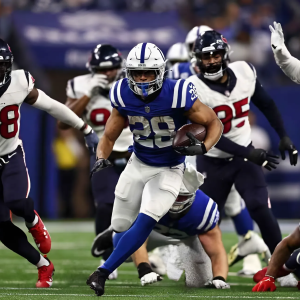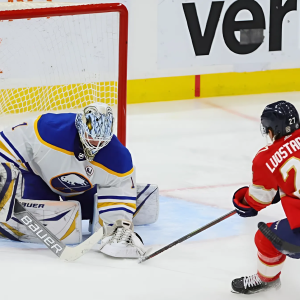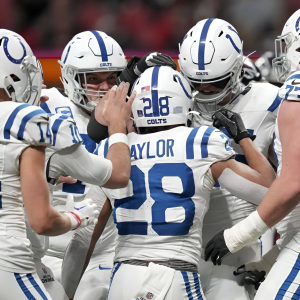
The NHL debut season from Ryan Johnson slots him in at number 20 in the Sabres Grades countdown. The rookie defenseman took less than a month to earn his first NHL promotion and immediately showed the calm and poise necessary to carve out a spot in the blueline rotation. He ended his season back in Rochester but will look to earn a full-time role with the Sabres next season.
The Grading System
If you missed the introduction to the grading system, I’ve assigned letter grades to each Buffalo player based on game performance. The letter grades are assigned based on statistical computation, taking into account the following factors:
- Production
- Quality of offense
- Quality of defense
- Volume of offense
- Volume of defense
- Powerplay performance
- Penalty kill performance
- Penalties drawn and taken
- Role
- Minutes played
It’s important to understand that these player performance grades are solely based on the algorithm created, with the one exception being a game shortened by injury. A player who missed significant ice time due to injury was not docked for fewer minutes played. This eliminates the confusion of how well a player performs when available.
I went back and graded all 82 games this season for every player. This way, we fully understand the progression of each player’s performance on a game-by-game basis.
Also, a big thanks to Evolving-Hockey for the individual game data. They’re among the best in the business.
Here’s the grading scale in table form, for reference:
| Grade | Lower Limit | Upper Limit |
|---|---|---|
| A+ | 92% | 100% |
| A | 85% | 92% |
| A- | 77% | 85% |
| B+ | 69% | 77% |
| B | 62% | 69% |
| B- | 54% | 62% |
| C+ | 46% | 54% |
| C | 38% | 46% |
| C- | 31% | 38% |
| D+ | 23% | 31% |
| D | 15% | 23% |
| D- | 8% | 15% |
| F | 0% | 8% |
Previous Sabres Grades: Eric Robinson
Ryan Johnson
Season Grade: D+
Average: C-
Consistency: A
Boom %: F [0%]
Bust %: D- [21.05%]
A common theme among the low rankers in the countdown, Johnson was mostly cast to a bottom-pairing, even-strength-only role. He was surprisingly consistent for a rookie defenseman, averaging slightly below par in the individual game grades.
Johnson has the mobility, puck movement, and offensive awareness to post some “boom” games in the future, but peaked at a 66.36% score. His best game was in a 3-1 road win in Boston on December 7th, when he posted an elite defensive performance supplemented with driving “A” quality offense. His lack of production limited his overall grade, as he went pointless with two shots on goal.
The downtrend in his play eventually landed him back in the AHL to further work on his development. Jacob Bryson eventually won his job back and the Sabres brought in Bowen Byram, pushing Johnson down the depth chart come the trade deadline.
Grade Distribution
As we advance through the countdown, you’re starting to see the clusters of grades shift more toward the left of the distribution chart. Over 60% of Johnson’s games were still below average, but plenty of positive games show hints of what he could become.
Johnson’s play tailed off as Buffalo started to make a run up the standings in the second half. The lack of correlation suggests that the Sabres were less dependent on Johnson and the depth of their lineup than on the improved play of their top-tier players.
Since it’s only his first professional season, there’s room for improvement and a chance he can become a key contributor to the backend. Until then, the talk surrounding Johnson will be his development as Buffalo’s most NHL-ready defensive prospect.
Player Comps
The player comparisons for a player just establishing himself in the league are always interesting. Johnson is not the offensive player Daniil Miromanov is currently, although maybe that’s a good ceiling comparison for offensive upside.
Jake Bean, Mario Ferraro, and Marc Staal are more willing shot blockers, although that could change in a new system next season. The latter two are also much more physical, as Johnson still needs to put on weight to become tougher to move in the corners and front of the net.
Besides Ferraro, none of the most similar players to Johnson had significant even strength minutes for their respective teams. If the list is extended, you’d see players like Esa Lindell, Nick Jensen, Ivan Provorov, Samuel Girard, and Jonas Brodin. That contingent is much more established and relied upon in big defensive roles on the backend.
If Johnson reaches the caliber of any of those final five in the coming years, the Sabres will have one of the best bluelines in the league.
2024-2025 Early Outlook
Being a left-handed shot, Johnson has a lofty depth chart climb with Rasmus Dahlin, Owen Power, Bowen Byram, Mattias Samuelsson, and Jacob Bryson ahead of him. He can bypass Bryson come training camp, but his fastest route into a bigger role is showing versatility on the right side.
With only Henri Jokihaju and Connor Clifton set to play right defense, one or two defensemen will have to shift to the right side and partner in the top four.
Johnson found some success on the right side last season in a limited time with Samuelsson and a more extended run with Power. The Power-Johnson pairing recorded Buffalo’s third-best goals-for-percentage and shot-quality percentage among all pairings with at least 100 minutes played.
Dahlin and Johnson paired for Buffalo’s second-best goals-for-percentage by the same terms.
This combination of offense and complementary defense to the Sabres’ best defensemen is an encouraging sign of what’s to come from Johnson.
Previous Sabres Season Grades
Prospects and Depth
Casey Mittelstadt, Kyle Okposo, and Erik Johnson
24. Jacob Bryson
23. Tyson Jost
22. Victor Olofsson
21. Eric Robinson
20. Ryan Johnson
19. TBD
18. TBD
17. TBD
16. TBD
15. TBD
14. TBD
13. TBD
12. TBD
11. TBD
10. TBD
9. TBD
8. TBD
7. TBD
6. TBD
5. TBD
4. TBD
3. TBD
2. TBD
1. TBD
